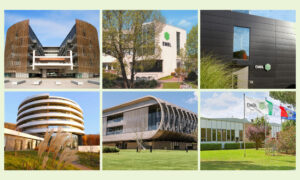
Leading EMBL’s six sites
As Peer Bork and Ewan Birney take up interim leadership of EMBL, the organisation announces additional changes in site leadership.
EMBL ANNOUNCEMENTS2025
embl-announcements
Showing results out of

As Peer Bork and Ewan Birney take up interim leadership of EMBL, the organisation announces additional changes in site leadership.
EMBL ANNOUNCEMENTS2025
embl-announcements
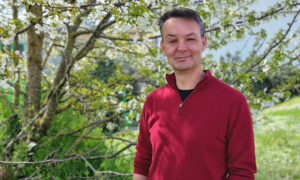
Meet Neil Humphreys, Head of the Gene Editing and Virus Facility at EMBL Rome. Neil and his team work closely with scientists to develop new models, tools, and cutting-edge technologies to support discovery and translational research.
PEOPLE & PERSPECTIVES2025
people-perspectives
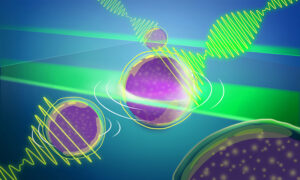
Another EMBL-engineered advance to Brillouin microscopy has significantly widened the aperture to provide quick 3D imaging in real time of light-sensitive samples.
SCIENCE & TECHNOLOGY2025
science-technology
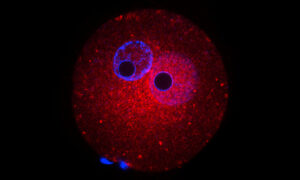
Researchers in the Boulard group at EMBL Rome demonstrated that the catalytic activity of the OGT enzyme is essential for embryonic development, and that when it’s reduced, embryo development is delayed – especially in males.
SCIENCE & TECHNOLOGY2025
science-technology
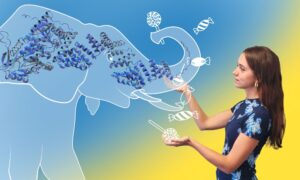
Sofia Rucli, postdoc at EMBL Rome, talks about her relationship with the protein OGT, a molecular ‘candy man’ of the cell.
PEOPLE & PERSPECTIVES2024
people-perspectives
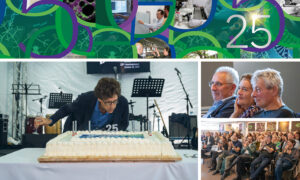
EMBL Rome celebrates its 25th anniversary this year – some impressions of the symposium and party organised for staff and alumni to mark this special occasion.
LAB MATTERS2024
lab-matters
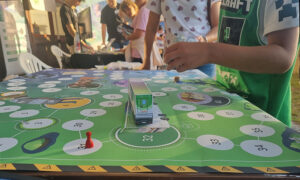
EMBL Rome volunteers participated in the European Researchers’ Night organised by the CNR in Montelibretti, attended by over 1,500 visitors. They prepared activities and games reflecting the wide variety of projects conducted at the site and across EMBL.
LAB MATTERS2024
lab-matters
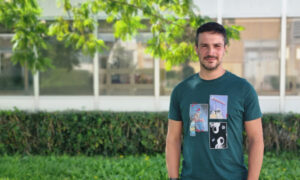
Daniele Ancora is an ARISE fellow in the Light Imaging Facility at EMBL Rome. With a background in theoretical physics, he develops algorithms to improve image-based omics technologies. Learn about his interdisciplinary training and his little ‘obsessions’.
PEOPLE & PERSPECTIVES2024
people-perspectives

The prize was awarded to John J. Hopfield, Princeton University, USA, and Geoffrey Hinton, University of Toronto, Canada, for their seminal contributions to the foundational methods that enabled the development of machine learning.
SCIENCE & TECHNOLOGY2024
science-technology
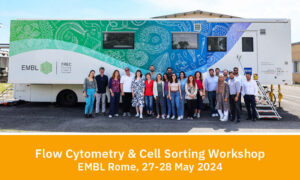
A scientific workshop on flow cytometry was organised at EMBL Rome, taking advantage of the presence of the Advanced Mobile Laboratory, the biggest unit of EMBL’s mobile lab fleet.
CONNECTIONS2024
connections

What makes EMBL unique? Among many things, it’s the infinite curiosity of its community.
LAB MATTERS2024
lab-matters

A study from the Hackett group at EMBL Rome led to the development of an epigenetic editing system that allows to precisely program chromatin modifications at any specific position in the genome, to understand their causal role in transcription regulation.
SCIENCE & TECHNOLOGY2024
science-technology
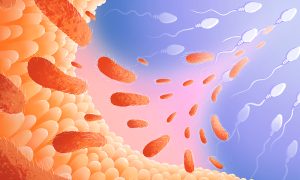
Scientists from EMBL Rome and EMBL Heidelberg found that disrupting the gut microbiome of male mice increases the risk of disease in their offspring. Their findings suggest that a father’s pre-conception environment can have lifelong effects on offspring.
SCIENCE & TECHNOLOGY2024
science-technology
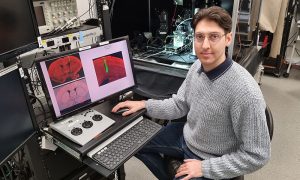
Diego Benusiglio, ETPOD postdoc in the Asari group at EMBL Rome, talks about his peculiar postdoctoral programme and his passion for science and Swing music
LAB MATTERSPEOPLE & PERSPECTIVES2024
lab-matterspeople-perspectives

A new study from the Asari group at EMBL Rome shows a different retinal function in awake mice compared to isolated retinal samples. These new insights could help to develop prosthetic devices that can act as a retina in the future.
SCIENCE & TECHNOLOGY2023
sciencescience-technology

Gerald Pfister, Head of the Flow Cytometry Facility at EMBL Rome, talks about his private and professional passions and a return to his roots as part of the TREC project.
LAB MATTERSPEOPLE & PERSPECTIVES2023
lab-matterspeople-perspectives
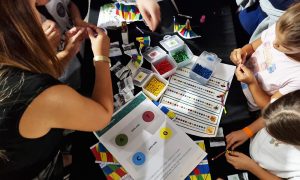
EMBL Rome celebrated the European Researchers’ Night by participating in an event organised at the CNR Campus in Montelibretti.
LAB MATTERS2023
lab-matters

Emerald Perlas, Head of the Histology Facility, talks about his experience in supporting multidisciplinary research at EMBL Rome and keeping up with technological advances.
LAB MATTERSPEOPLE & PERSPECTIVES2023
lab-matterspeople-perspectives
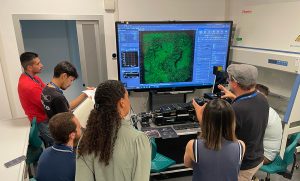
The first EMBO Practical Course on imaging-based spatial-omics was organised at EMBL Rome to explore the latest techniques to visualise RNA transcripts and proteins in their native tissues.
LAB MATTERSSCIENCE & TECHNOLOGY2023
lab-mattersscience-technology

EMBL Rome alumna Urtė Neniškytė returned to her native Lithuania, helping establish the Vilnius University-EMBL Partnership Institute and advance genome-editing technologies there.
PEOPLE & PERSPECTIVES2023
alumnipeople-perspectives
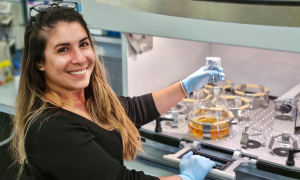
Adriana Castillo Caballero talks about her curiosity-driven career, the importance of the people in her life, and her dreams for the future
LAB MATTERSPEOPLE & PERSPECTIVES2023
lab-matterspeople-perspectives
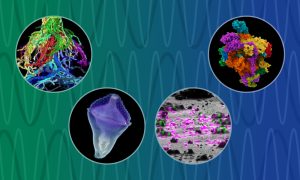
EMBL researchers and collaborators have begun an impactful innovation-development journey, thanks to a European Commission ‘IMAGINE’ grant.
CONNECTIONSLAB MATTERS2023
connectionslab-matters
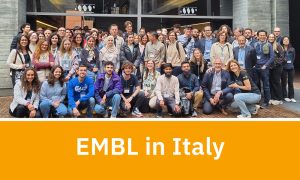
The annual meeting organised by Italian EMBL alumni was held in Turin on 18-19 May, hosted by the University of Turin and the University of Piemonte Orientale (UPO)
CONNECTIONS2023
alumniconnections
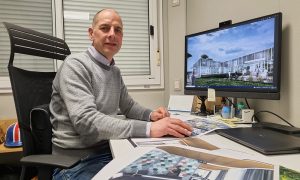
Timothy Shayers talks about his role in overseeing the renovation works at EMBL Rome, his past experiences around the world, and his personal passions.
LAB MATTERSPEOPLE & PERSPECTIVES2023
lab-matterspeople-perspectives

Interim head of EMBL Rome Cornelius Gross has been awarded an Advanced grant from the European Research Council (ERC) for his project TERRITORY, aimed at investigating the neural basis of territorial aggression and fear.
EMBL ANNOUNCEMENTSLAB MATTERS2023
embl-announcementslab-matters
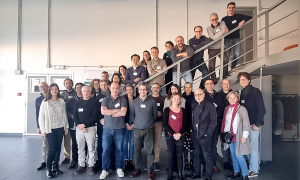
Scientists from EMBL and its French academic partners gathered at EMBL Rome for a workshop to foster collaboration and advance research in neuroscience.
CONNECTIONSLAB MATTERS2023
connectionslab-matters

EMBL Rome group leader Jamie Hackett receives EUR 2 million for the ModLogic project, aimed at understanding how chromatin modifications impact gene activity.
EMBL ANNOUNCEMENTSLAB MATTERS2023
embl-announcementslab-matters
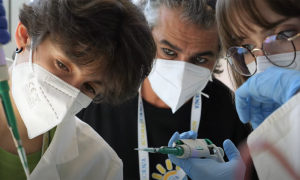
20 secondary school students from all over Italy participated in the fourth edition of Summer in Science at EMBL Rome.
LAB MATTERS2022
lab-matters
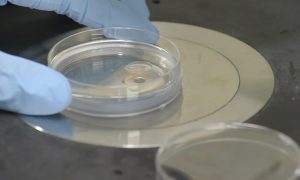
The GEEF facility at EMBL Rome supports scientists worldwide with scientific expertise and state-of-the-art gene editing technologies.
LAB MATTERSSCIENCE & TECHNOLOGY2022
lab-mattersscience-technology

Cornelius Gross, Miki Ebisuya and Nassos Typas join EMBO, the prestigious organisation for the life sciences.
EMBL ANNOUNCEMENTSLAB MATTERS2022
embl-announcementslab-matters
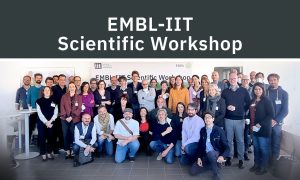
EMBL and IIT scientists met in person at EMBL Rome to strengthen their collaboration and explore new opportunities for scientific exchange
CONNECTIONSLAB MATTERS2022
connectionslab-matters
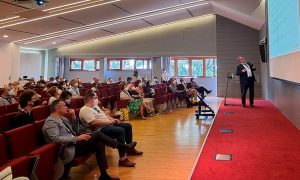
The GSK Vaccines site in Siena hosted the annual EMBL in Italy event. The hybrid meeting brought together industry leaders, representatives from biotech start-ups, data scientists, and researchers from academia.
CONNECTIONS2022
alumniconnections
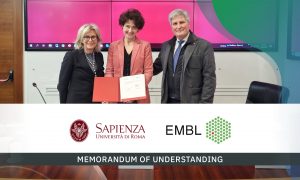
EMBL and the Sapienza University of Rome confirm their reciprocal interest in intensifying collaborations and launch new opportunities for exchange of expertise
CONNECTIONSLAB MATTERS2022
connectionslab-matters
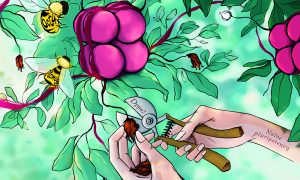
Recent studies from the Hackett group at EMBL Rome have revealed new insights on the mechanism regulating transmission of non-genetic information during embryonic development, and inspired a scientific illustration
SCIENCE & TECHNOLOGY2022
sciencescience-technology
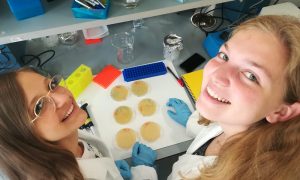
After a two-year break, the summer school organised by Adamas Scienza and EMBL in collaboration with CNR is back. It will take place at the International Research Campus of Monterotondo (Rome) from 13 to 24 June 2022.
LAB MATTERS2022
lab-matters
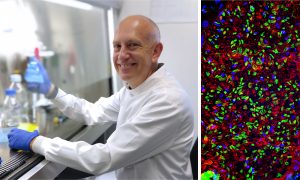
Experiences at EMBL Rome led former group leader to establish his start-up in Italy, developing a new generation of gene therapies.
LAB MATTERSSCIENCE & TECHNOLOGY2022
alumnilab-mattersscience-technologytechnology-and-innovation
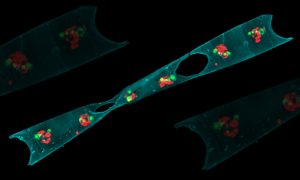
A technology around since the ‘60s, flow cytometry has increasing applications. New leadership at EMBL’s flow cytometry facilities is looking to ease use, expand training, and encourage more collaboration.
LAB MATTERSSCIENCE & TECHNOLOGY2021
lab-mattersscience-technology
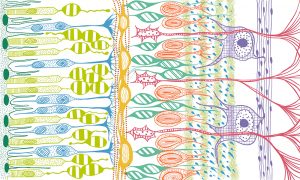
EMBL scientists have found evidence of an unexpected role for retinal cells in pre-processing visual information; their results provide potential opportunity for future prosthetic visual aids.
SCIENCE & TECHNOLOGY2021
research-highlightssciencescience-technology
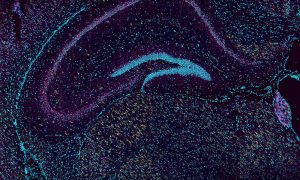
At EMBL, we have many dream teams – groups of individuals who support each other, innovate, and work together. One of those dream teams bridges two core facilities at EMBL Rome.
SCIENCE & TECHNOLOGY2021
picture-of-the-weekscience-technology
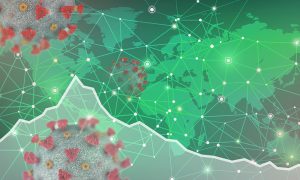
EMBL’s most recent Science and Society seminar explored how best to harness big data to address multi-faceted issues of a pandemic.
CONNECTIONS2021
connectionsevents
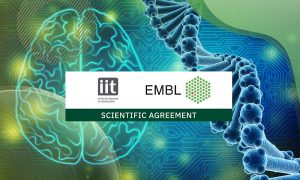
The European Molecular Biology Laboratory and the Italian Institute of Technology have signed an agreement to expand the scope of their collaboration to include areas of mutual interest and in the context of EMBL’s 2022-2026 Programme “Molecules to Ecosystems”.
CONNECTIONSLAB MATTERS2021
connectionslab-matters

The new group leader at EMBL Rome will study how embryos can inherit non-genetic information from their parents that causes stable and heritable effects
LAB MATTERSPEOPLE & PERSPECTIVES2021
lab-matterspeople-perspectives
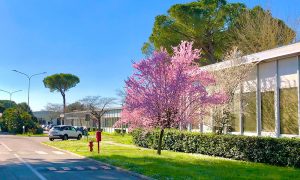
EMBL’s site in Monterotondo has recently been blessed with blue skies and sunshine, leading to trees blooming early on campus.
LAB MATTERS2021
lab-matterspicture-of-the-week
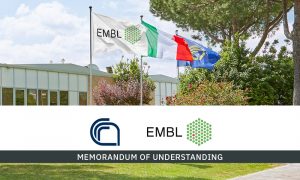
EMBL and CNR have signed a memorandum of understanding to strengthen scientific cooperation. The agreement will foster collaborative projects and integrate them within the European and global scientific landscape.
CONNECTIONSLAB MATTERS2021
connectionslab-matters
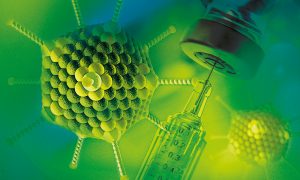
The story of a life-long friendship and a professional partnership that sowed the seeds for a ground-breaking vaccine technology.
SCIENCE & TECHNOLOGY2020
alumniscience-technology

Researchers in the Gross group at EMBL Rome have investigated the mechanism behind defensive behaviour in mice. They have identified a specific area of the brain that encodes both spatial and threat cues to drive location-specific defensive responses.
SCIENCE & TECHNOLOGY2020
sciencescience-technology
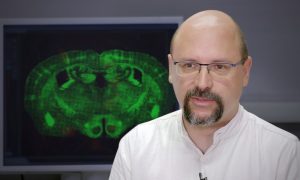
Research facilities play a crucial role in the advancement of science by supporting scientists with specialised expertise and state-of-the-art equipment. The Microscopy Facility at EMBL Rome exemplifies this role by making a wide variety of light microscopy technologies available to its researchers…
LAB MATTERSSCIENCE & TECHNOLOGY2020
lab-mattersscience-technology

As he enters retirement, Head of EMBL Rome Phil Avner reflects on his scientific career and memories from his time as Head of EMBL’s site in Italy
LAB MATTERSPEOPLE & PERSPECTIVES2020
lab-matterspeople-perspectives
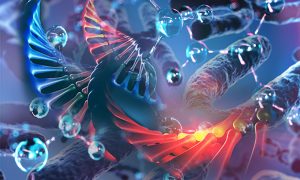
A study conducted by the Hackett group at EMBL Rome has identified key factors controlling the complex system of gene regulation during early embryo development, shedding new light on the mechanisms behind these events and on their evolutionary implications. Their findings are published in Nature…
SCIENCE & TECHNOLOGY2020
sciencescience-technology
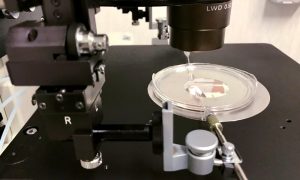
To study how SARS-CoV-2 infects cells, the Gene Editing and Embryology Facility (GEEF) at EMBL Rome will generate mice that express a human version of a protein called ACE2. The mouse line will be shared with preclinical research collaborators carrying out vaccine and antibody trials, and with the…
SCIENCE & TECHNOLOGY2020
sciencescience-technology
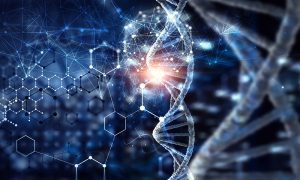
Scientists at EMBL Rome unveil the mechanism behind the most studied epigenetic modification.
SCIENCE & TECHNOLOGY2020
sciencescience-technology
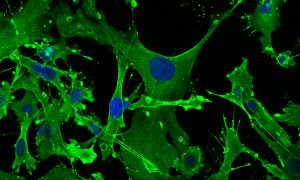
This image shows mouse embryonic fibroblasts (MEFs), their cell skeletons (green) and nuclei (blue) under a confocal microscope, photographed by Julia Hansen in the lab of Matthieu Boulard at EMBL Rome.
SCIENCE & TECHNOLOGY2020
picture-of-the-weekscience-technology

The next stop on Tara’s journey will be at the mouth of the Tiber
EMBL ANNOUNCEMENTS2019
embl-announcementsevents
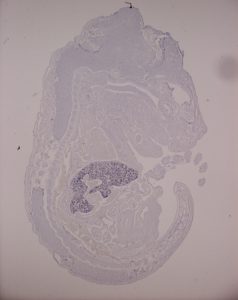
Red blood cells, the delivery men that take oxygen to cells all around the body, have short lives. To keep enough of them in circulation, the human body produces around 2 million of these cells every second – even more in response to challenges like severe blood loss. In a study published today…
SCIENCE & TECHNOLOGY2010
sciencescience-technology
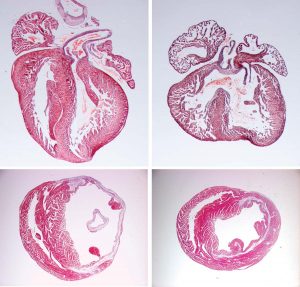
Almost a century after it was discovered in fruit flies with notches in their wings, the Notch signalling pathway may come to play an important role in the recovery from heart attacks. In a study published today in Circulation Research, scientists at the European Molecular Biology Laboratory (EMBL)…
SCIENCE & TECHNOLOGY2009
sciencescience-technology
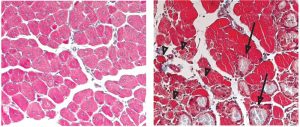
For scientists at the European Molecular Biology Laboratory (EMBL) in Monterotondo, Italy, what seemed like a disappointing result turned out to be an important discovery. Their findings, published online this week in the journal Proceedings of the National Academy of Sciences (PNAS), provide…
SCIENCE & TECHNOLOGY2009
sciencescience-technology
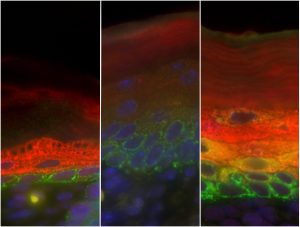
Stem cells have a unique ability: when they divide, they can either give rise to more stem cells, or to a variety of specialised cell types. In both mice and humans, a layer of cells at the base of the skin contains stem cells that can develop into the specialised cells in the layers above.…
SCIENCE & TECHNOLOGY2009
sciencescience-technology

Mice are one of biology’s most important model organisms, because 98% of their genes and many of their traits and diseases are similar to ours. Researchers at the Mouse Biology Unit of the European Molecular Biology Laboratory (EMBL) take advantage of these similarities and use mice to study…
LAB MATTERS2009
lab-matters
No results found